Beauty can be skin-deep — and more affordable — with these high-tech devices you can use at home
- Share via
We live in an on-demand world — with the expectation that our meals, entertainment and transportation will be available in a few minutes — or in an instant.
That “right-now” mantra is also transforming the way we approach skin care and anti-aging treatments as we continue to spend big on cosmetic surgery and in-office procedures. The American Society of Plastic Surgeons estimates that we shelled out $16 billion on liposuction, tummy tucks, fillers and laser treatments, among other procedures, in 2016.
Although doctors are often quick to point out that their professional machines deliver stronger, more-intensive treatments than the gadgets that a consumer might order online, but the market for high-tech devices that can be used at home — micro-needling rollers, LED chromotherapy tools, radio-frequency wands — is flourishing.
Now, if you’re hoping for a collagen-stimulating extravaganza while texting and live-streaming at 1 a.m., you’re in luck.
“Many of today’s women don’t want their mother’s plastic surgeon or the results,” says Amy Kamin, chief executive of EndyMed, an Israel-based company that introduced a use-at-home radio frequency machine last year. “They want to look like themselves, but they want to see the results at home. Everyone is busy.”
The device, called the NEWA, is a miniature version of the technology used in the EndyMed machines in medical offices and spas. It is, Kamin says, for consumers who want “to maintain what they’ve done at the doctor’s office — or someone who can’t pay thousands of dollars for a series of treatments.”
Many of the use-at-home products fall into one of six categories:
- Machines, like the NEWA, that deliver radio-frequency energy into the skin with the goal of increasing collagen and elastin production to lift and tighten the skin.
- Nano-current machines that deliver electrical waves to the skin to stimulate adenosine triphosphate, a nucleotide that plays a crucial role in skin rejuvenation (and a naturally occurring cell-building block that declines with age).
- Micro-needling machines that prick the skin with tiny needles. The healing process is supposed to stimulate collagen growth.
- LED chromotherapy lights, which are used to eradicate acne-causing bacteria, stimulate collagen growth and reduce skin irritation.
- Sonic-cleansing devices, a category pioneered by Clarisonic.
- Gadgets with sensors that were created to check your skin’s moisture levels and pigmentation or provide data on UV rays, humidity levels and temperature.
“It’s a really interesting time in skin care,” says Dr. Jenny Kim, a professor of dermatology and the director of cosmetic dermatology at UCLA. “The amount of research that is going on to develop things is wonderful.”
Many of the technologies can improve skin conditions, she says, but she cautions that in-office and at-home treatments may not result in the same outcomes.
“Red LED light,” Dr. Kim says, “has been shown to help with inducing collagen — reversing photo damage and things like that.”
Microneedling, where the skin comes into contact with tiny needles in a roller, “has become very popular in the last five years or so. A tiny injury to the skin is done, and that creates healing and, therefore, new collagen and regeneration.” But, she adds, “You have to develop something that is effective and safe for everybody. It’s hard to monitor home devices.”
Radio-frequency technology “and what it does in terms of getting thermal stimulation to our tissue and activating collagen stimulation is true,” she says. “Whether a [home] device gets the clinical outcome it is touting is less clear. For many consumers, it comes down to what works for your friends and family.”
Some over-the-counter gadgets have prompted conversations and warnings about safety issues. The U.S. government “requires medical device manufacturers to get marketing clearance before offering them for sale,” according to the FDA website, but not all of the use-at-home machines fall in the “medical devices” category. A little homework is in order for anyone considering a purchase.
Many of today’s women don’t want their mother’s plastic surgeon or the results
— Amy Kamin, chief executive of EndyMed
The NEWA has FDA clearance, as does the DRx SpectraLite EyeCare Pro, an LED device that looks like a set of futuristic wrap-around glasses developed by Manhattan-based dermatologist Dr. Dennis Gross. “It’s a very effective, focused way to stimulate the cell that makes collagen step up its game,” he says. “You can multitask with it. It will stay there while you text or brush your teeth.”
Melanie Simon, an electrical aesthetician with a large following, is the founder and chief executive of ZIIP Beauty, which markets a handheld, FDA-cleared nano-current device. She understands the concept of instant gratification and emphasizes her video tutorials that can be found on the ZIIP app. “I’ve been doing this [electric facials] for 15 years,” she says, and with the videos, “I’m with you the whole time.”
The bottom line, Dr. Kim says, is that consumers “want to wait on plastic surgery. They want to age naturally and have control of what they are using.”
And that, increasingly, means their skin care treatments are happening at home.
Anti-aging tools
If you’re considering the use-at-home route, here are eight skin-care devices worth a look.
NEWA Skin Care System
EndyMed’s NEWA uses radio frequency energy to tighten skin and encourage collagen production. The kit includes the device and LIFT Activator Gel, which is applied to the skin before the treatment. It’s an at-home version of a professional treatment offered in medical offices and spas. $495, newabeauty.com.

Beauty Bioscience GloPRO Microneedling Regeneration Tool
After GloPRO launched its collagen-stimulating device last year, it quickly became one of the most talked-about gadgets on the market. At one end of the wand, there’s a roller ball that is studded with tiny needles that prick the skin; the healing process encourages collagen and elastin production. The tool also has a red LED light function, which is used to encourage skin rejuvenation. $199, shop.nordstrom.com.
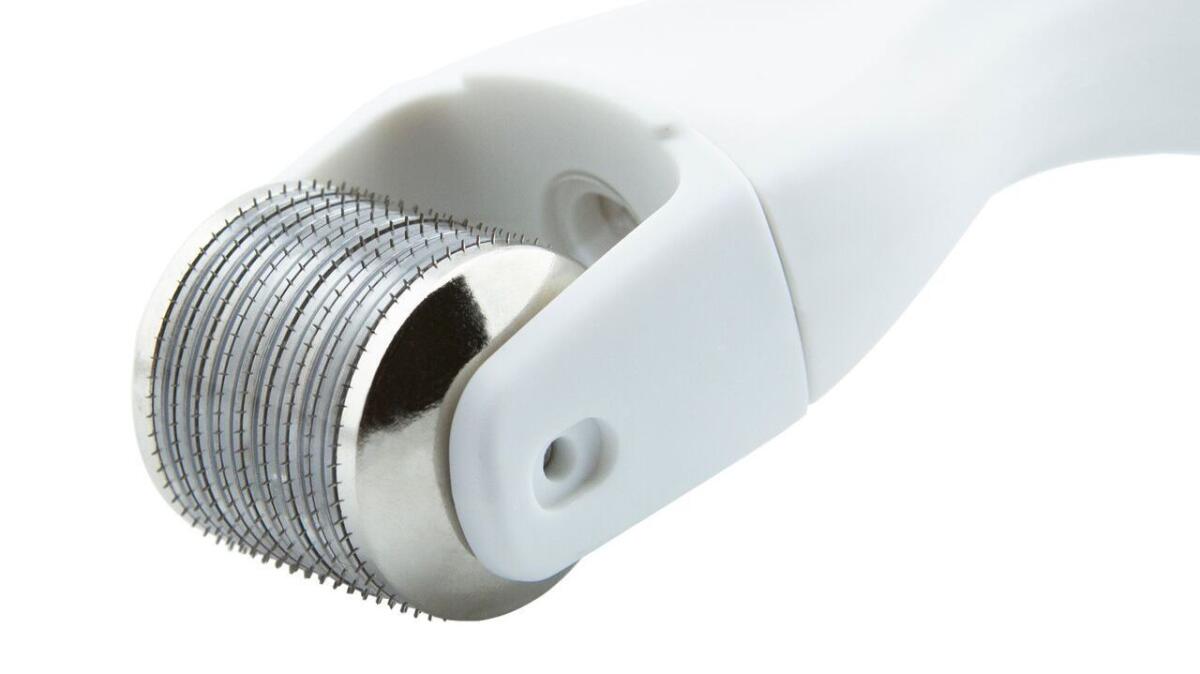
Dr. Dennis Gross DRx SpectraLite EyeCare Pro
This eye-therapy device, which looks like something you might spot in a sci-fi film, includes 72 tiny LED lights. When it’s used for three minutes, the process stimulates collagen production, improving skin density and smoothing fine lines and wrinkles. It’s got a head strap, which means you can use it and multi-task to your heart’s content. $159, drdennisgross.com.
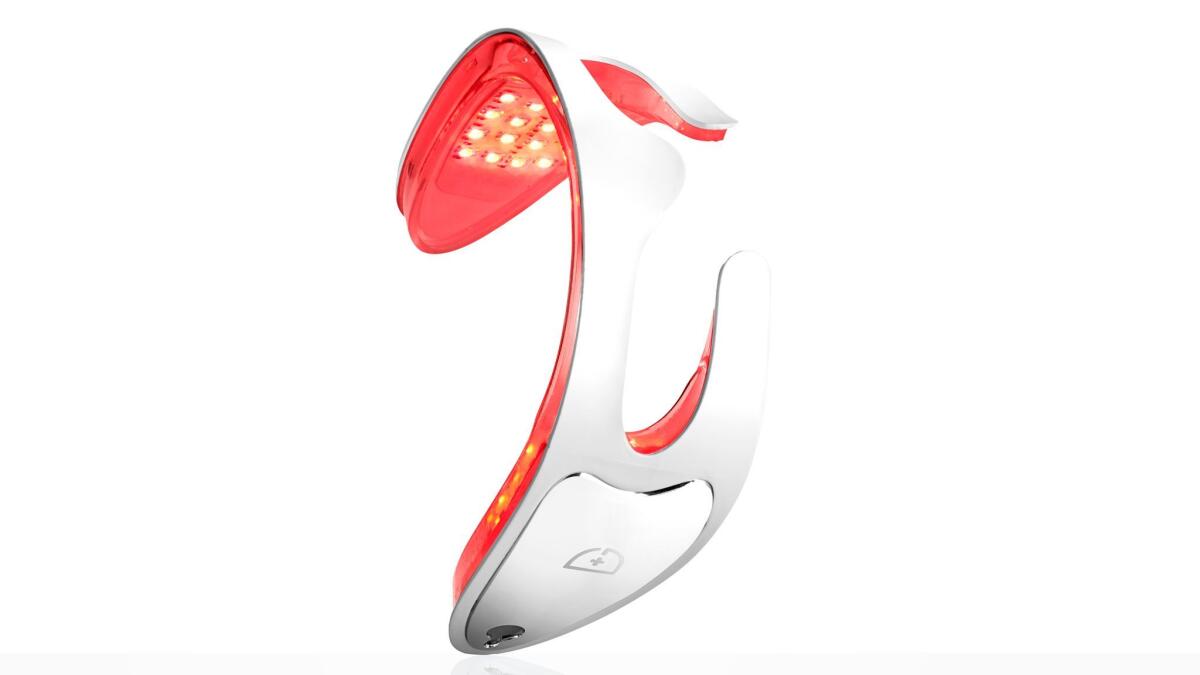
LightStim For Acne
This device, which was designed to target mild to moderate acne, uses 30-plus blue and red LED lights to destroy acne-causing bacteria and calm irritated skin. The LED lights also stimulate collagen and elastin production. $169, www.lightstim.com.
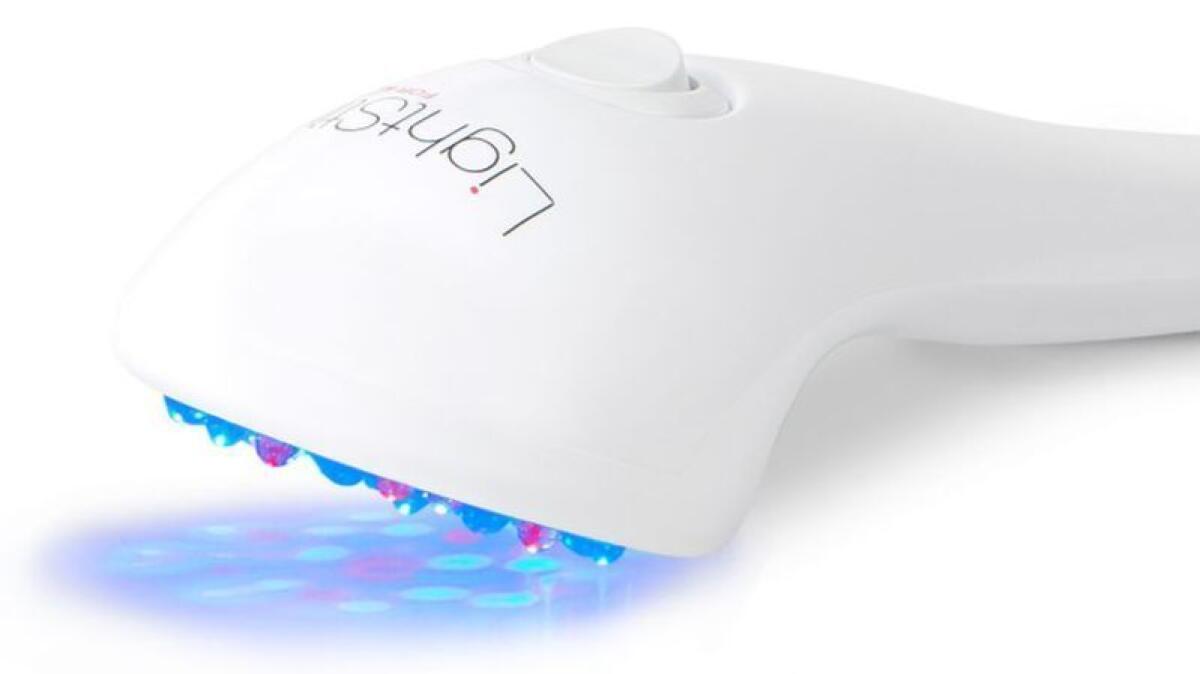
HiMirror Plus
The HiMirror generated a lot of headlines earlier this year at the annual Consumer Electronics Show in Las Vegas, making an appearance on several “best beauty tech products.” It’s a makeup mirror with LED lights that simulate various lightning conditions, and it also assesses your skin’s condition. The device will take an HD photo of your face and then use an algorithm to assess issues such as wrinkles, fine lines, red spots and dark circles. That information is stored so you can work on problem areas. The analysis takes only seconds; the rest is up to you. $239, www.himirror.com.
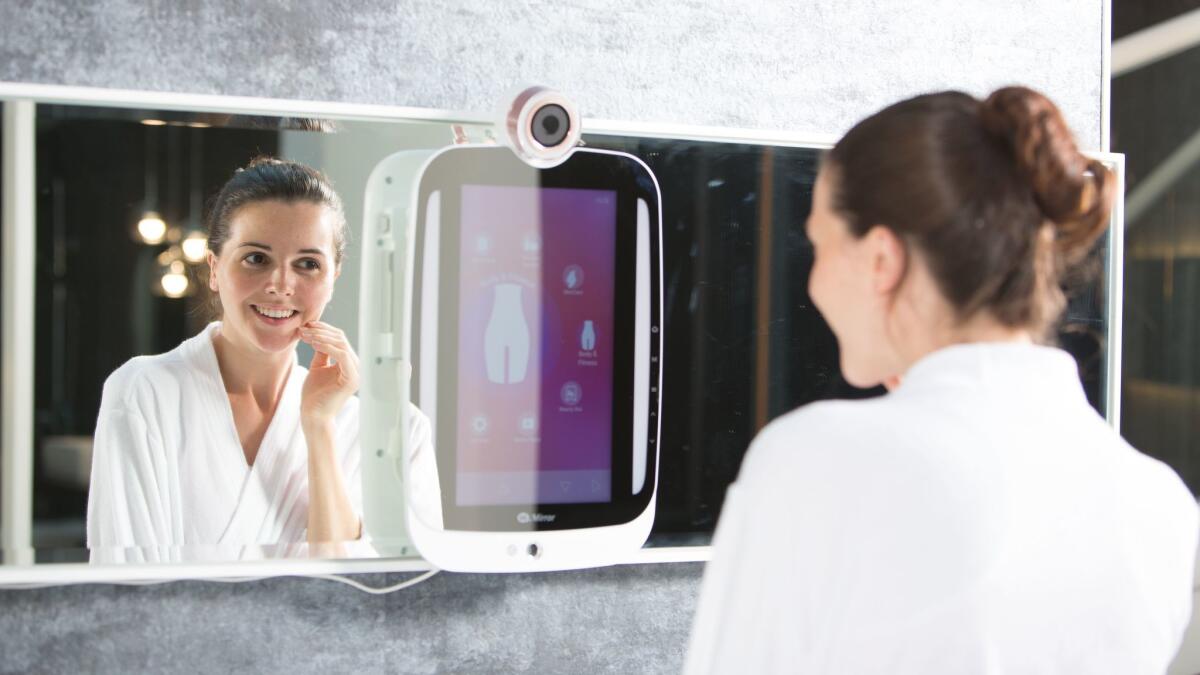
NuFACE Trinity Facial Toning Device
This facial toning device was created by esthetician Carol Cole, who started her career at the SoCal-based Golden Door Luxury Resort & Spa, where she specialized in microcurrent facials. It uses microcurrent technology to stimulate production of adenosine triphosphate, which, according to the product website, “drives the creation of key structural proteins such as collagen and elastin.” $325, www.mynuface.com.
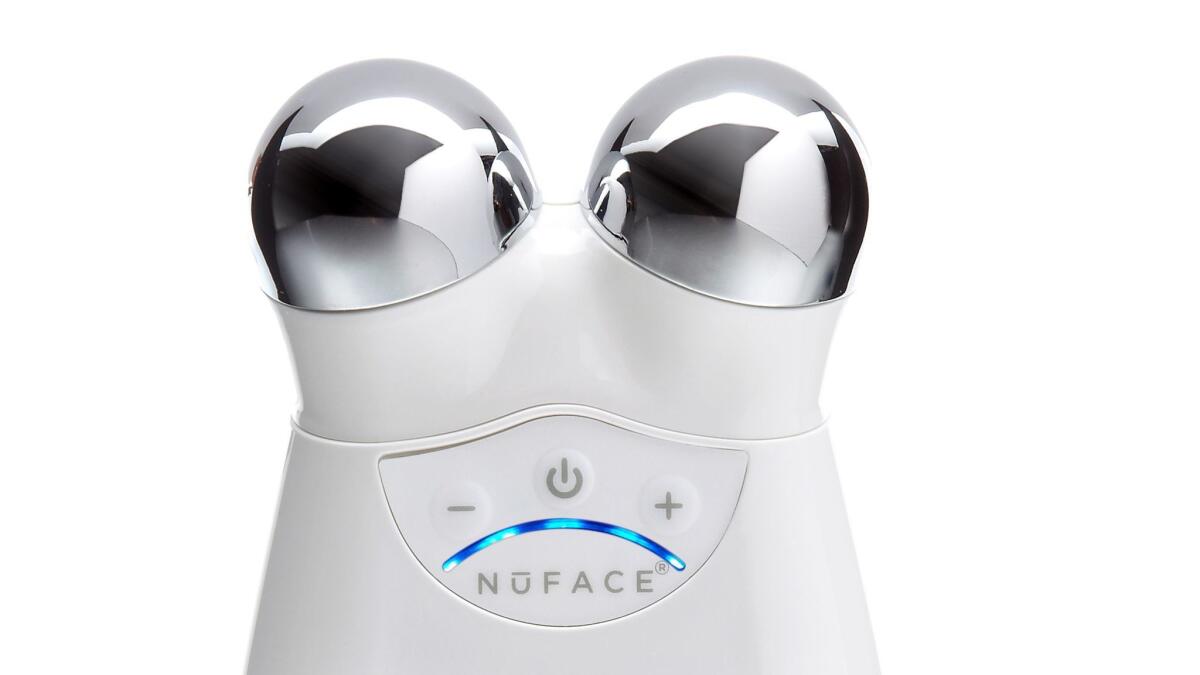
Clarisonic Smart Profile Uplift
Clarisonic helped jump-start the use-at-home trend with its original cleansing brush. The Smart Profile Uplift builds on that technology. It’s a cleansing, massage and body device all in one — with a massage head designed to smooth fine lines and wrinkles and boost absorption of skin-care products. The kit includes the Clarisonic Smart Profile Device, Firming Massage Head, Revitalizing Cleanse Brush Head, Turbo Massage Body Brush Head and 1 oz. Refreshing Gel Facial Cleanser. $349, www.clarisonic.com.
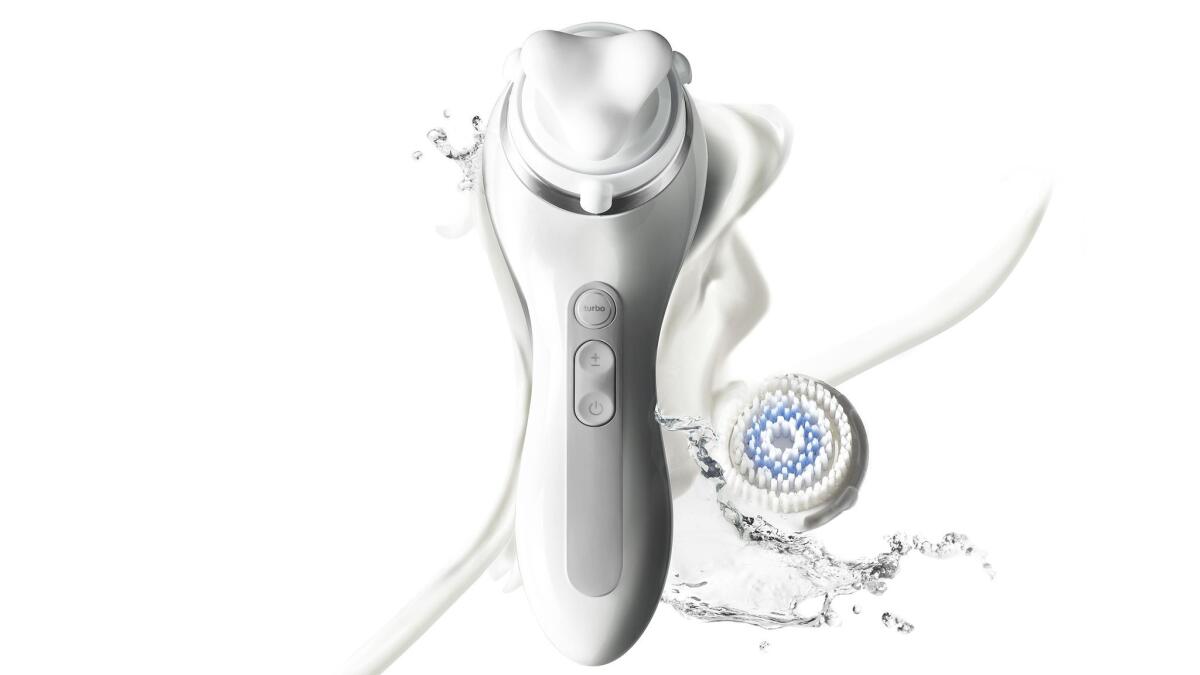
ZIIP Beauty ZIIP
ZIIP Beauty’s ZIIP, the brainchild of entrepreneur Melanie Simon, uses tiny electrical currents to stimulate adenosine triphosphate production, a nucleotide that is linked to cellular replication and preservation and helps repair damaged skin. The kit includes the ZIIP device and conductive gel. $495, ziipbeauty.com.
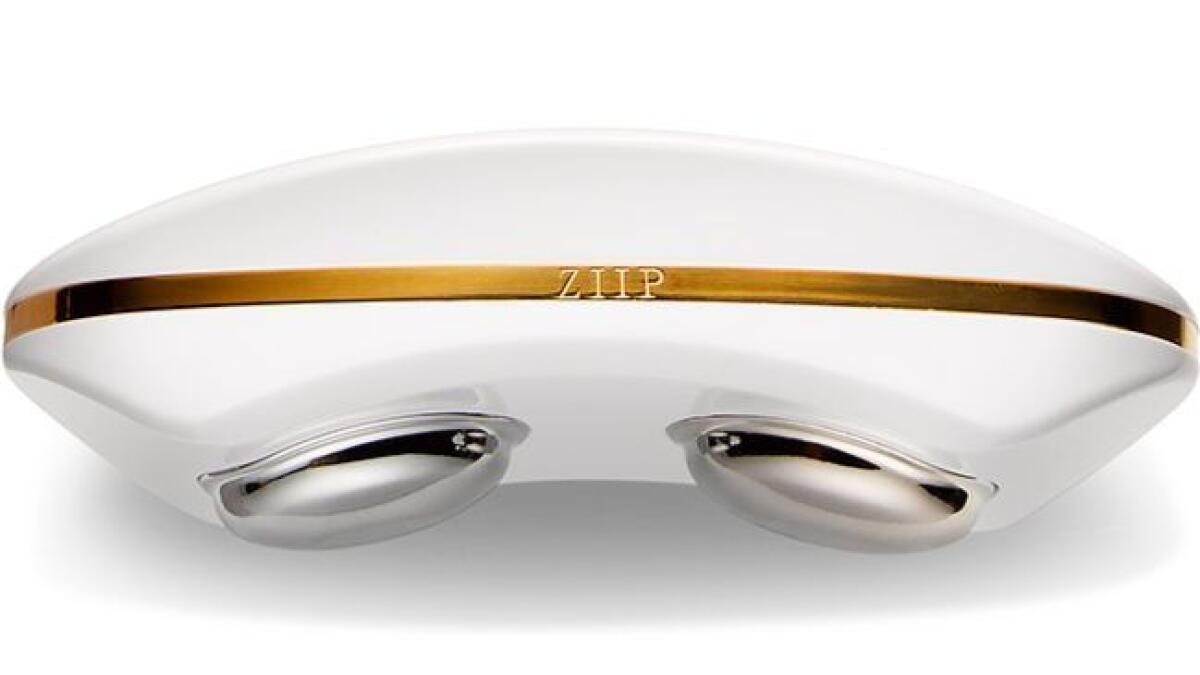
Fashion Videos
For fashion news, follow us at @latimesimage on Twitter.
ALSO
Best Made Co. brings its $348 axes — and an indoor archery range — to La Brea 'guys gulch'
Gwyneth Paltrow, Jessica Alba, Zoe Saldana turn out for star-studded Baby2Baby Gala
Fall 2017 Wear LACMA collection features art-inspired wares from RTH, Gabriela Artigas & Co.




